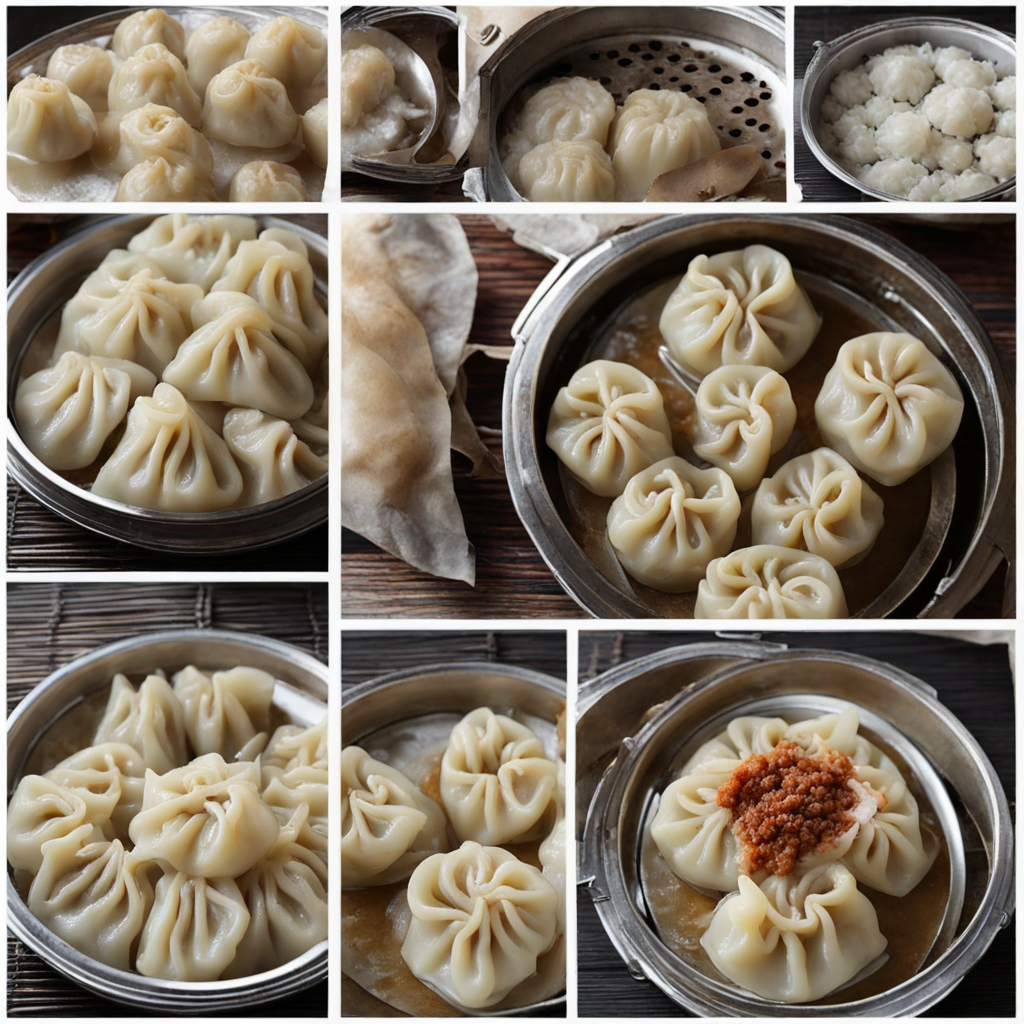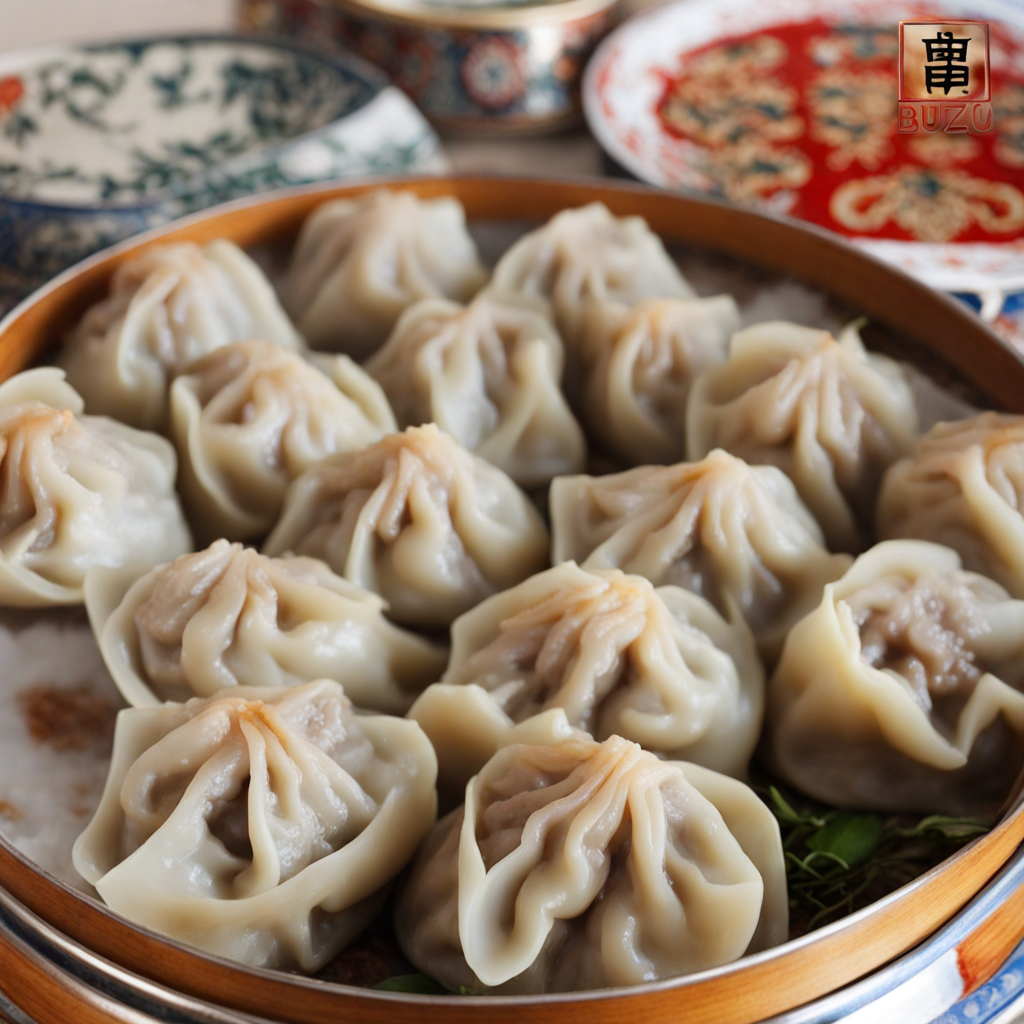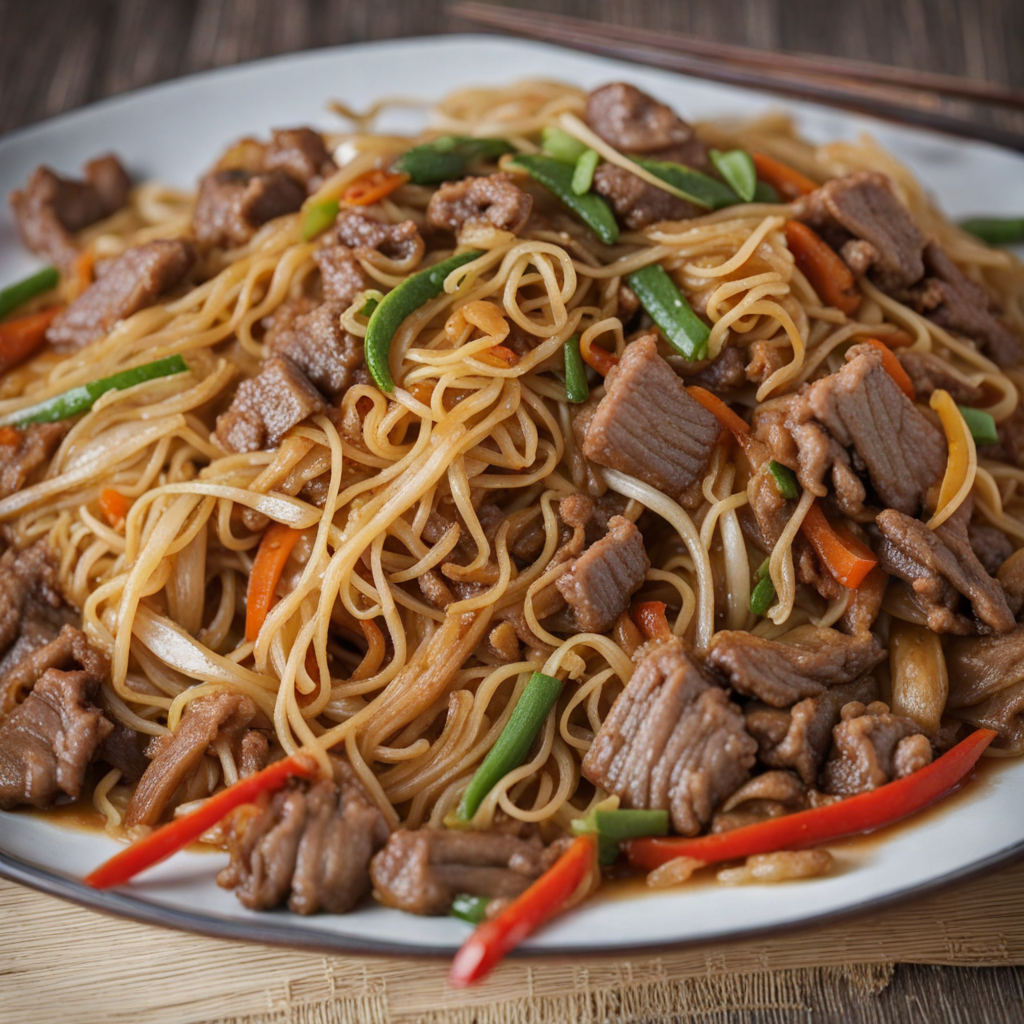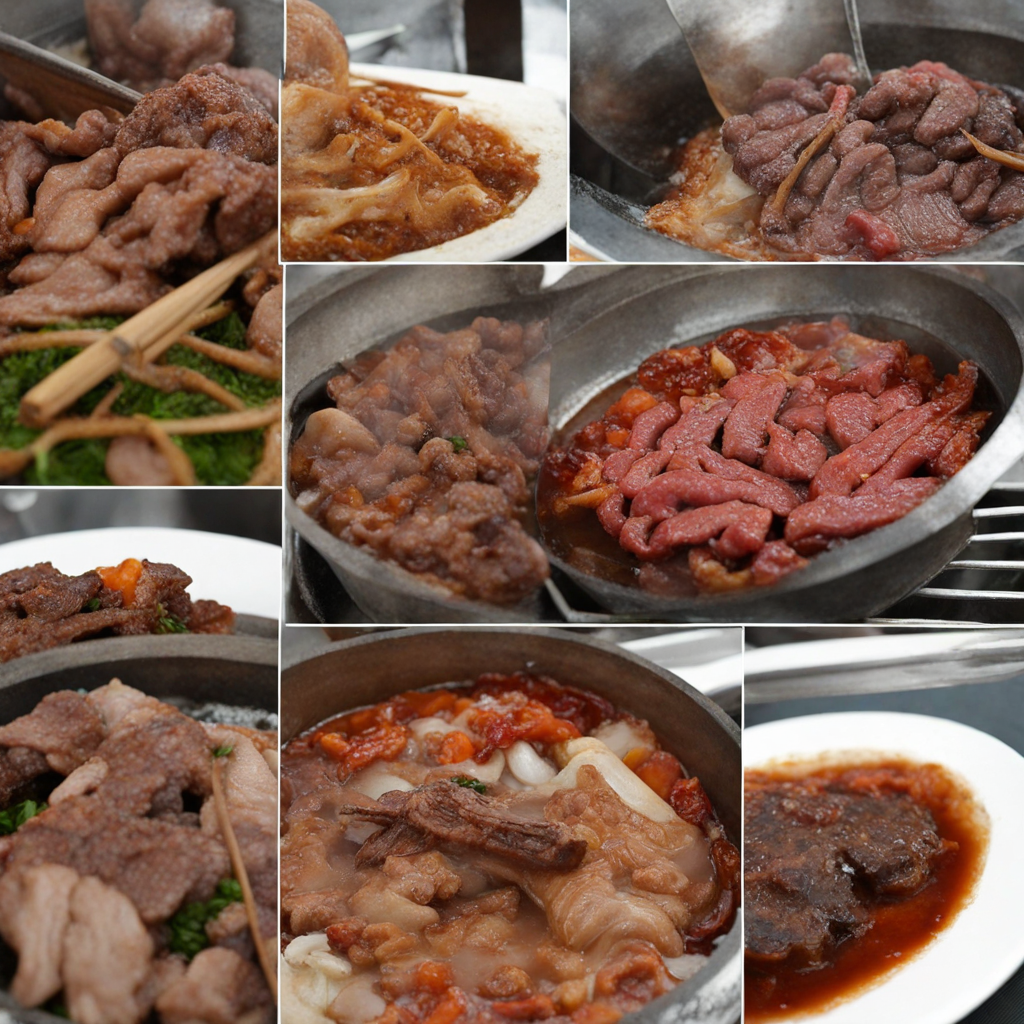Buuz
Бууз, a traditional Mongolian dish, is a type of steamed dumpling that holds a significant place in the country's culinary landscape. This delightful food is often enjoyed during festivals and family gatherings, reflecting the rich cultural heritage of Mongolia. The history of Бууз dates back centuries, with its origins rooted in the nomadic lifestyle of the Mongolian people. As herders and hunters, they sought practical yet nourishing meals that could be prepared quickly and eaten on the go. The dumpling evolved as a convenient way to pack meat and fat into a portable form, making it an ideal sustenance for the harsh, nomadic lifestyle. The flavor profile of Бууз is a harmonious blend of savory and aromatic notes. The dumplings are typically filled with minced meat, most commonly mutton or beef, which imparts a rich, umami flavor. The meat is often seasoned with garlic, onion, and a touch of black pepper, enhancing its natural taste while adding depth to each bite. The dough itself has a slightly chewy texture, which complements the tender filling, creating a delightful contrast. Some variations include a mix of vegetables or spices, catering to different palates and preferences. Preparation of Бууз is a labor of love, often involving the entire family, especially during festive occasions such as the Lunar New Year, known as Tsagaan Sar. The process begins with making the dough, which is typically composed of flour, water, and a pinch of salt. Once the dough is kne
How It Became This Dish
The Rich Tapestry of Бууз: A Culinary Journey Through Mongolia #### Origins Бууз (buuz), the beloved Mongolian dumpling, is a dish steeped in history and cultural significance. Its origins can be traced back to the nomadic lifestyle of the Mongolian people, who have inhabited the vast steppes of Central Asia for centuries. The harsh climate and the need for portable, nourishing food sources shaped the culinary practices of these nomads. Historically, the Mongolian diet relied heavily on meat, dairy, and grains, with lamb, goat, and beef serving as staple proteins. The introduction of dumplings into this diet is believed to have been influenced by the interactions between Mongolian nomads and neighboring cultures, particularly during the time of Genghis Khan in the 13th century. As the Mongolian Empire expanded, it facilitated exchanges with various peoples across Asia, including the Chinese, who have a long tradition of dumpling-making. The earliest forms of бууз were likely simple meat-filled dough pockets, designed for convenience and sustenance. As nomads traveled and migrated, these dumplings became an integral part of their diet, offering a practical option for meals on the go. The preparation of бууз was also a communal affair, often made in large batches during family gatherings or significant events. #### Cultural Significance Бууз is not merely a food item; it is a symbol of Mongolian hospitality, identity, and tradition. It is often served during special occasions, such as the Lunar New Year (Tsagaan Sar), weddings, and other celebrations. The preparation and consumption of бууз during these festivities serve to enhance social bonds and reinforce cultural heritage. During Tsagaan Sar, families prepare an array of traditional dishes, and бууз holds a prominent place in the feast. The act of making бууз is a cherished family tradition, often passed down through generations. Grandmothers teach their grandchildren the art of dough-making and filling preparation, ensuring the continuation of this culinary legacy. The meal emphasizes the importance of family, community, and sharing, which are central tenets of Mongolian culture. In addition to its cultural significance, бууз is also a reflection of the Mongolian spirit of endurance and adaptability. The nomadic lifestyle has necessitated a cuisine that is not only practical but also rich in flavor and nourishment. Buuz embodies this essence, with its tender dough and savory filling serving as a hearty reminder of the resilience of the Mongolian people. #### Development Over Time As Mongolia transitioned from a nomadic society to a more settled way of life, the preparation and consumption of бууз evolved, adapting to new influences while retaining its core characteristics. In the 20th century, particularly after the establishment of the Mongolian People's Republic in 1924, the culinary landscape began to change. The introduction of modern cooking techniques and tools allowed for greater experimentation and refinement of traditional recipes. The basic composition of бууз remains consistent, typically featuring a filling made from minced meat, often mixed with onions, garlic, and seasoning. However, variations have emerged over time, with different regions in Mongolia adopting unique ingredients and preparation methods. For instance, some people add vegetables like carrots or cabbage to the filling, while others might incorporate spices to appeal to diverse palates. With globalization and increased tourism, бууз has also found its way into the kitchens of international chefs and food enthusiasts. While traditional recipes are still revered, modern interpretations of буuz have emerged, showcasing fusion flavors and techniques. This evolution reflects the dynamic nature of Mongolian cuisine, where tradition and innovation coexist. The advent of the Internet and social media has played a significant role in popularizing бууз outside Mongolia. Food bloggers and culinary influencers have shared their experiences of making and tasting бууз, sparking interest and curiosity among a global audience. This newfound exposure has led to the establishment of Mongolian restaurants worldwide, where бууз is featured prominently on menus, introducing new diners to the joys of this traditional dish. #### The Making of Бууз The process of making бууз is an art form in itself, requiring skill, patience, and a deep understanding of the ingredients. The dough is typically made from flour, water, and a pinch of salt, kneaded until smooth and elastic. The filling usually consists of minced meat (often mutton or beef), seasoned with salt, pepper, and chopped onions. The mixture is then carefully encased in small rounds of dough, which are pleated to create a distinctive shape. Traditionally, бууз is cooked using a steaming method, which preserves the moisture and flavor of the filling. Steamed to perfection, they emerge from the steamer plump and glistening, ready to be served with a side of soy sauce or fermented milk products, such as airag (fermented mare’s milk), which complements the rich flavors of the dumplings. #### Contemporary Perspectives Today, бууз continues to hold a special place in the hearts of Mongolians and food lovers alike. It serves as a bridge between the past and the present, encapsulating the spirit of a culture that values tradition while embracing change. In urban centers like Ulaanbaatar, you can find бууз stalls and restaurants bustling with both locals and tourists, all eager to savor this iconic dish. The global food movement has also led to a revival of interest in traditional Mongolian cuisine, with chefs experimenting with local ingredients and modern culinary techniques to create innovative dishes inspired by бууз. This resurgence has not only contributed to the preservation of Mongolia’s culinary heritage but has also fostered a greater appreciation for the flavors and traditions of this unique cuisine on the world stage. #### Conclusion The story of бууз is a testament to the resilience and adaptability of Mongolian culture. From its humble origins among nomadic tribes to its current status as a beloved culinary delight, бууз reflects the heart and soul of Mongolia. It serves as a reminder of the importance of family, community, and tradition in a rapidly changing world. As we savor each bite of this delicious dumpling, we partake in a rich tapestry of history, culture, and shared human experience that transcends borders and unites us all.
You may like
Discover local flavors from Mongolia







